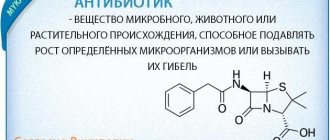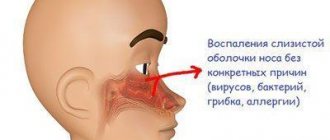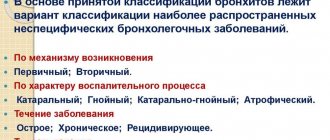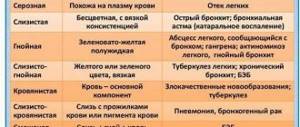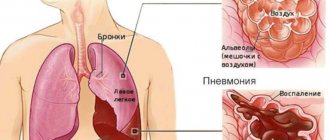What is sputum? Which one is normal? Why is it needed?
It is a thick, viscous, jelly-like substance that is released when you cough up.
Secreted in the mucous epithelium of the lower airways by submucosal and unicellular glands. Its composition includes high molecular weight glycoproteins, immunoglobulins, lipids and other substances. Simply put, phlegm contains:
- Impurities of saliva;
- Slime;
- Red blood cells;
- Fibrin;
- Epithelial cells;
- Bacteria;
- Foreign inclusions (dust particles, food residues, etc.).
In healthy people, tracheobronchial exudate is transparent, performs a protective function and is endowed with antimicrobial properties.
It consists of mucus produced by serous-mucosal glands, goblet glandular glandulocytes of the mucous epithelium of the bronchi and trachea, as well as cellular inclusions.
Tracheobronchial exudate ensures the natural removal of inhaled particles, toxins and waste products from the body due to the transport activity of the ciliated epithelium.
The norm of phlegm released per day from the tracheobronchial tree is 10-100 ml. This is the amount of substance that a person ingests during the day without noticing.
Increased mucus formation occurs as a result of changes in the biochemical composition of tracheobronchial secretions and disruption of the escalator function of ciliated epithelial tissue, as a result of which mucostasis develops.
to the content?
When coughing, yellow sputum: causes
Yellow color of sputum when coughing is a sure sign of the presence of pathogens in the body. There is a whole list of ailments that are characterized by increased mucus production.
1
Bronchitis. It develops as a result of a viral or bacterial infection that provokes inflammation of the bronchial mucous epithelium. It often begins with a dry cough, which later develops into a severe cough with yellow sputum. Other symptoms of bronchitis include sore throat and fever.
2
Pneumonia. Occurs as a complication after suffering respiratory diseases. The most common strain of microbes responsible for pneumonia in adults is Streptococcus pneumoniae.
The infection affects one or both lungs and causes the air sacs to fill with pus or fluid.
As a result, the patient develops pus in the sputum. The symptoms associated with this pathology depend on the specific type of disease. Common symptoms include shortness of breath, chills, fever, and a cough with yellow (sometimes green and bloody) phlegm.
Source: nasmorkam.net
3
Cold or flu. One of the most common signs of these ailments is the appearance of transparent or yellowish clots when coughing up.
4
Sinusitis. May be triggered by allergies, viral or bacterial infections. It is characterized by inflammation of the paranasal sinuses (sinuses), which are four pairs of air-filled cavities.
When they are irritated, the mucus that normally drains into the nose becomes blocked, pooling in the sinuses and creating the perfect breeding ground for bacteria. Sinusitis is accompanied by headache, nasal congestion, sore throat, and persistent cough with characteristic discharge.
On the subject: Sinusitis: symptoms and treatment in adults and children. Causes and first signs
5
Cystic fibrosis. This condition is classified as a chronic lung disease when tracheobronchial exudate begins to accumulate in the lungs. One of the signs of pathology is the tracheobronchial substance of yellowish, greenish and brown color.
6
An allergic reaction is another common cause of colored phlegm when coughing up. The allergen irritant provokes inflammation, thereby increasing the production of thick, pale yellow secretion.
Excess mucous clots, moving through the nasopharynx, irritate the throat and cause coughing. Respiratory allergy symptoms go away with elimination of the allergen and proper therapy.
7
Asthma. Causes respiratory inflammation, and often leads to the formation of excess tracheobronchial mucus. This substance is white-yellow, stained with inflammatory cells.
But since the cough in asthma is usually protracted and unproductive, the viscous clots are usually insignificant. Other symptoms of asthma include wheezing, wheezing, fatigue, and cramps.
8
Lung cancer (LLC). The most serious pathology in which yellow sputum is coughed up. Sometimes it contains bloody impurities, due to which the exudate acquires a pinkish tint.
This pathology is characterized by persistence of the cough reflex for more than two weeks and persistent chest pain. The presence of such symptoms requires immediate medical attention.
to the content?
Wet cough in a child: causes and methods of treatment
When treating a cough, first of all, it is necessary to eliminate its cause. A doctor must prescribe treatment. It is important to comply with the dose, frequency of administration, medications and course duration.
For a wet cough, the patient may be prescribed mucolytic, expectorant medications that help thin and remove mucus from the respiratory tract. Combination medications may also be used. Such drugs simultaneously have anti-inflammatory, expectorant, and bronchodilator effects. If the causative agent of the disease is bacteria, antibiotic therapy is indicated.
When treating diseases accompanied by a wet cough, taking antitussive drugs is contraindicated.
A wet cough in the absence of a fever can be treated with inhalation. Inhalations for wet coughs in adults help to liquefy sputum and remove it, moisturize the mucous membranes of the respiratory system, promote rapid restoration of affected tissues, have an analgesic effect, and relieve bronchospasm.
Inhalations can be cold (using a nebulizer) or steam. For wet coughs, preference should be given to nebulizers, since in this case the drug in the form of extremely small particles penetrates the trachea and bronchi, thus getting directly into the source of inflammation. With steam inhalations, the large size of steam particles does not allow them to penetrate far, which makes them effective only in the treatment of diseases of the throat and nasopharynx and unsuitable for the treatment of wet cough. In addition, steam inhalations are not used when treating a child, and they are also prohibited at elevated body temperatures.
For inhalation for wet cough, use a solution of salt or soda, expectorants, anti-inflammatory, antimicrobial drugs, alkaline mineral water, saline solution.
If there is a wet cough, the patient is advised to drink plenty of warm fluids, which helps moisturize the mucous membranes and thin the sputum, making it possible to get rid of the cough much faster. It is useful to drink heated mineral water, decoctions or infusions of medicinal herbs, berry and/or fruit compotes, tea with lemon, fruit drinks, milk with the addition of figs, honey, butter.
If you have a wet cough, the patient needs to drink plenty of fluids.
It is recommended to regularly ventilate and humidify the air in the room where the patient is located. To improve sputum discharge, the patient should sleep on a high pillow. Some patients are indicated for drainage massage and breathing exercises. At least for the period of illness, the patient should stop smoking, but it is better to get rid of the bad habit once and for all. For example, eliminating a smoker's cough without quitting smoking is not possible.
In most cases, there is no need for bed rest for a coughing patient, but some serious diseases, such as pneumonia, are treated in a hospital setting.
The mucus that comes out when you cough may be thin, thick, or sticky and difficult to cough up. If the mucus contains impurities of pus, it acquires a yellowish-greenish tint. If there is blood in the sputum, it has a rusty or reddish color.
In diseases of the respiratory system of viral etiology, sputum is usually clear and watery. The same sputum can be observed in patients with allergic diseases of the respiratory system. If the patient produces white, curd-like sputum, this may indicate that the inflammation is caused by microscopic fungi. Tuberculosis is characterized by copious sputum mixed with blood.
If a cough occurs against the background of an acute respiratory infection, it is accompanied by pain and/or discomfort in the throat, runny nose, headache, and fever.
In inflammatory diseases of the upper respiratory tract, cough often bothers the patient at night and in the morning.
Cough should be treated only after finding out its cause and making a diagnosis.
In acute bronchitis, at the beginning of the disease the cough is dry, after a few days sputum begins to separate. If the disease becomes chronic, the patient experiences prolonged persistent bouts of coughing with the release of mucopurulent or purulent sputum.
With pneumonia, patients complain of increased sweating, fever, weakness and fatigue; when coughing, mucopurulent sputum is released.
With whooping cough, there are bouts of severe coughing that can lead to suffocation. Sputum is scanty.
In bronchial asthma, the sputum is transparent, glassy, and the patient also experiences wheezing and attacks of suffocation.
If a wet cough develops, you should consult a doctor, especially if the patient has had a fever for more than 7 days, pain in the chest, shortness of breath, pus or blood in the sputum, weight loss, heavy sweating, frequent chills, severe cough, which does not stop for more than an hour.
A strong wet cough is a protective mechanism that occurs due to damage to the mucous membrane of the bronchi, trachea and larynx. The main task of this reflex is to restore airway patency.
A wet cough is accompanied by the discharge of sputum. In medicine it is called “productive”.
It is worth noting that a wet type of cough in an adult is not a disease, but one of its manifestations. To cure this symptom, it is important to understand the causes of its occurrence, which will eliminate the causative agent of the disease.
In an adult, cough syndrome with sputum production may occur for the following reasons:
- bronchial asthma;
- after ARVI, colds, parainfluenza and influenza;
- neoplasms in the lungs;
- complication of inflammation of the respiratory tract;
- chronic infection (syphilis, tuberculosis).
It is worth noting that if a severe wet cough occurs due to a cold, but it does not stop for 14 days, then urgent medical attention is needed.
A chronic disease can be present in the body for a long time in a “sleeping” mode and appear only when favorable conditions occur.
Therefore, a strong wet cough may indicate that a period of exacerbation has begun.
Diagnostics
Through examination, you can find out the causes of a nonproductive cough. Diagnostics consists of such activities as:
- x-ray or fluorography;
- examination of the patient with listening to the chest;
- sometimes percussion is done;
- General analysis of urine and blood.
In addition, additional diagnostics may be needed - a smear from the larynx, bacterial culture of sputum, etc.
Treatment of wet cough is carried out only after the formation of the clinical picture and description of the disease.
If an adult has a wet cough, do not use antitussives that suppress the protective reflex of the respiratory tract. In this case, the secreted sputum will accumulate in the lungs, thereby creating favorable conditions for the inflammatory process and the progression of infection.
To get rid of a wet cough that is viral or bacterial in nature, drugs that expectorate and thin the sputum are used. So, a wet cough can be cured by taking syrups.
However, it is best to purchase such drugs after a medical consultation, when the cause of this unpleasant symptom is identified.
It is desirable that the medicine contains substances that dilute sputum and stimulate immune processes:
- polysaccharides;
- glycosides;
- saponins;
- tannins;
- organic acids and so on.
In addition, tablets and other preparations for wet coughs based on herbal substances (senega, thyme, plantain, primrose) deserve special attention. Such drugs as Bromhexine, Pectoral, Gerbion, Prospan have many positive reviews.
Such products are intended to treat all types of cough. Therefore, when purchasing them, you should clarify that you need a syrup that helps cure a wet cough.
In addition, a wet cough can be cured by dissolving expectorant and mucolytic (thin and remove phlegm) tablets. Mucolytic medicines for cough with sputum are:
- Flumicil (solution for inhalation and injection);
- ACC (tablets);
- Mukosol (tablets);
- Mukobene (tablets);
- Ambrolan (tablets);
- Ambrobene (syrup);
- Lazolvan (syrup).
Expectorants are:
- Sodium bicarbonate (powder, solution);
- Amtersol (syrup);
- Stoptussin (syrup, tablets);
- Mucaltin (tablets);
- Doctor MOM (syrup, ointment);
- Bronchicum (syrup);
- Travisil (tablets).
Moreover, adults can use homeopathic ointments for a wet cough. This product quickly penetrates the body through the skin. This is the best medicine for warming up the respiratory tract.
You can also do various inhalations for coughing at home. Thus, inhaling medicinal steam promotes the release and subsequent dilution of sputum and stimulation of expectoration.
To get rid of a wet cough at home, you can make a mixture of saline and mineral water, and to enhance the effect, add 2-3 drops of pine aroma oil.
Today, you can quickly cure a wet cough at home using a nebulizer. This device is the best tool for inhalation treatment. It allows you to direct the steam flow into the respiratory tract. The duration of the procedure can be unlimited, that is, the patient must regulate it at his own discretion.
Nebulizers are:
- Compressor. These devices are universal, allowing the use of various medications.
- Steam. Only aroma oils can be used.
- Ultrasonic. Used if you need to cure bronchitis. You can use saline solutions and herbal solutions.
Treating a wet cough at home can be quite effective if you use medicinal herbs and other useful remedies. So, to cure a wet cough in an adult, you can prepare an infusion of flax seeds.
People breathe air filled with various particles. The human body tries to neutralize irritating factors. He does this by coughing. Reflex exhalations and air expelled from the lungs clear the larynx, pharynx, trachea, bronchi and other respiratory organs of “garbage”. After quickly getting rid of the irritating factor, the tremors no longer recur. In this case, we are talking about a natural reaction of the body, which is not evidence of the presence of any pathology.
What kind of cough is there?
Coughing is a natural reaction to various respiratory irritants. In most cases, it occurs against the background of an infectious or viral disease. If the cough does not last long, then there is no need to worry. If the symptoms do not subside even after a month, then serious treatment is necessary. In this case, the susceptibility of the lungs becomes higher, and coughing occurs as a reflex.
Yellow sputum when a child coughs
Cough with yellowish discharge in children is the result of an infectious lesion of the airways - colds, acute bronchitis, ARVI, whooping cough, pneumonia or tuberculosis.
In the vast majority of cases, an acute cough with fever is caused by a cold, and yellowish exudate indicates the addition of pathogenic microorganisms. It is necessary to study phlegm for microflora.
If such an analysis is not possible, the doctor prescribes broad-spectrum antibiotics. Typically, the therapeutic effect of taking medications occurs on the third day. If relief does not occur, the antibiotic is changed.
To help parents: Cough from snot in a child: how to treat it? Child coughs in his sleep
Is it possible to walk with a child with a runny nose and cough? Answers on questions
to the content?
Causes of wet cough
Among the most common causes, it is worth noting diseases such as ARVI. Acute respiratory viral infections cause a number of symptoms that are familiar to any adult: a profuse runny nose, congestion, sore and itchy throat, an increase in body temperature up to 38 degrees, as well as a mild wet cough. In this situation, the cough will be a consequence of mucus draining from the nose along the walls of the larynx. In this case, coughing is a process that allows the body to clear the upper respiratory tract of mucous secretions from the nasal passages, in simple terms - from snot. However, a wet cough without fever can be a sign of more serious diseases, among which the following are worth noting:
- complications of the runny nose, among which it is worth noting sinusitis, sinusitis and sinusopharyngitis. These diseases can occur without fever, but are accompanied by weakness, sometimes severe pain in the bridge of the nose and frontal lobes of the head.
- bronchitis is an inflammatory process in the bronchi, which is also accompanied by copious sputum production, the cough has a wave-like character, and may occur without fever.
- pneumonia or pneumonia. A dangerous disease that poses a threat to human life. With pneumonia, the cough is strong, deeply debilitating, and pain may occur during inhalation.
- allergy. A severe, wet cough may be caused by an allergic reaction to dust, chemicals, animal dander, or food. In the vast majority of cases, allergies are not accompanied by a rise in body temperature, and the cough intensifies many times upon contact with the allergen.
- whooping cough. An infectious disease that is more common in preschool children, coughing attacks do not go away for several weeks. Rarely found among adults.
- pulmonary edema. The cough has a paroxysmal, exhausting character.
- diseases of the cardiovascular systems. Many diseases of the heart and blood vessels are accompanied by an infrequent wet cough.
- tuberculosis. A common disease that is transmitted by airborne droplets and requires long-term treatment. A distinctive feature is the presence of blood in the sputum.
- asthma. A chronic disease of the respiratory system, in which paroxysmal, prolonged cough has a wave-like character.
- syphilis. Some chronic sexually transmitted infections can also cause a mild, wet cough.
- tumor. Oncological diseases of the respiratory system are also accompanied by productive paroxysmal cough.
Purulent sputum
Purulent sputum is a mucopurulent substance consisting of white blood cells, dead tissue, cellular debris, serous fluid and liquid mucus.
The color intensity of the purulent secretion can vary from milky with yellowish to green, and manifests itself in pneumonia, bronchiectasis, abscess pneumonia, prolonged bronchitis or acute infectious lesions of the respiratory system.
A cough with purulent sputum is a good reason to consult a doctor, because if pus is coughed up, its shade will allow you to determine the pathology and choose the appropriate therapy.
- Yellowish-purulent and yellowish-greenish (mucopurulent) abnormal secretions indicate that antibiotic therapy will help reduce symptoms.
- A green or greenish tint indicates a long-standing respiratory infection, pneumonia, ruptured lung abscess, chronic infectious bronchitis, infected bronchiectasis, or cystic fibrosis.
- Bright yellow and orange mucus is produced by pneumonia (caused by pneumococcal bacteria), pulmonary embolism, bronchioloalveolar cancer, or tuberculosis.
- Discharge of a pale, milky, yellowish or yellowish-gray hue (clearly visible on a white background) indicates the ineffectiveness of antibiotic treatment, since the symptoms of the disease are associated either with a viral infection or with allergies (even asthma), and not with microbiotics that are sensitive to antibiotics .
- A foamy pink color is characteristic of severe pulmonary edema.
- Foamy white indicates pulmonary obstruction or edema.
- Light yellow sputum with blood indicates a possible inflammation of the throat or bronchi, or the presence of bleeding erosions, ulcers or tumors of the lower airways. The abundant presence of blood clots in bronchial secretions indicates tuberculosis, bipolar disorder, pulmonary embolism, and abscess pneumonia.
to the content?
Determination of pathology by the color of discharge
Characteristics of sputum during cough
| Discharge color | Symptoms and other processes | Possible disease |
| Unexpressed yellow | The process of expectoration in a person may not disappear for a long time, and attacks of uncontrollable coughing and wheezing occur. In this case, foci of inflammation are observed in the pulmonary area | Indicates that pneumonia is in its early stages |
| Pus in the respiratory organs accompanied by elevated body temperature | Bronchitis in the acute stage | |
| Poison yellow | The discharge is presented in the form of a viscous consistency and is discharged in small quantities | Indicates the development of liver cirrhosis |
| Body temperature stays within 37-37.2 for a long time | Oncological processes are occurring | |
| The skin tone becomes jaundiced, the discharge has a liquid but difficult to separate consistency | Complications due to hepatitis, lung damage | |
| Ocher | This condition occurs in those who have inhaled dusty air for a long time, which contains increased levels of oxidized iron. | Siderosis |
| Greenish yellow | Purulent sputum, discharged in the form of a viscous heterogeneous mass | Purulent type bronchitis |
| Body temperature is 38 and above, breathing becomes heavy, bubbling and wheezing occur | Pneumonia of bacterial type | |
| The release of residual effects against the background of tuberculosis therapy using special drugs | Cured tuberculosis | |
| Rust | During expectoration, mucus may contain streaks of a dirty-rusty color, which indicate injuries in the vessels of the respiratory tract. Most often, the phenomenon goes away on its own after a few days. | Intensified cough accompanying any pathological condition that occurs against the background of respiratory infections |
| Against the background of body temperature, a secondary infection occurs, in which a viral or infectious disease causes injury to the walls of blood vessels | Pneumonia | |
| Brown | The cough lasts a long time, and the discharge has a purulent content and smell | Oncology in the lungs |
| A lingering cough with wet discharge occurs in people who have inhaled air filled with coal or silica dust for a long time. | Pneumoconiosis | |
| Cough accompanied by constant fatigue, and when coughing up bloody streaks of reddish-brown color appear | Tuberculosis | |
| Light or dark green | Occurs accompanied by severe weakness, shortness of breath, pain in the chest and fever | Processes of abscess or gangrene in the lungs |
| Periods of exacerbation and remission follow each other, weakness and high body temperature occur | Bronchiectasis (pathological dilatation of the bronchi) | |
| The discharge has a viscous consistency | Sinusitis | |
| Transparent with white veins | The mucus looks like glass, breathing becomes wheezing and there is a feeling of shortness of breath | Asthma |
| Prolonged cough with copious amounts of sputum | Whooping cough | |
| Mucous secretions penetrate the larynx when the body assumes a horizontal position. These actions cause severe coughing attacks | Runny nose (rhinitis) | |
| Inflammatory processes occur in the nasopharynx, sore throat and discomfort as with a sore throat. | Flu | |
| Transparent | Cough considered as a productive symptom. Most often occurs in the evening or at night | Diseases related to the heart and blood vessels |
Sometimes a cough may occur in the morning, this indicates that the body is clearing the respiratory tract of bacteria that have accumulated on the mucous membrane during the night's sleep. Regardless of the etiological origin, it is important to treat cough with sputum in a timely manner, following the doctor’s instructions.
Yellow sputum when coughing without fever
The appearance of colored discharge when coughing without an increase in temperature indicates the non-infectious nature of the pathology.
For example, systematically raising the voice and frequent screaming can provoke excess mucus formation, and as a result, growths form in the throat.
An allergic cough with exudate with yellow spots also occurs without fever.
Attention
In smokers, the formation of dirty yellow dense exudate is associated with the harmful effects of nicotine tar and tobacco smoke, which lead to decomposition of bronchial tissue and wear of the respiratory system.
As a result, bronchioloalveolar cancer often develops. That is why it is extremely important to visit a specialist in time when the first signs of pathology are detected.
Similar
Sputum with wet cough
Before treating a wet cough in an adult, it is necessary to conduct a laboratory test of sputum to determine the nature of the disease. Tracheobronchial secretion may have a liquid, thick or viscous consistency. The presence of a large amount of mucus in it signals the presence of an allergic or cold-infectious process in the bronchi and lungs.
The yellowish-green color of sputum, caused by impurities of pus, may indicate the development of bronchitis or pneumonia. The appearance of white, cheesy discharge during expectoration warns of the likelihood of a fungal respiratory infection, and clear, watery sputum usually accompanies viral infections or chronic diseases of the respiratory system.
It is important to know!
When treating a wet cough accompanied by sputum discharge, the use of antitussive drugs is contraindicated. By blocking the central or peripheral links of the corresponding reflex, they lead to the accumulation and stagnation of a large amount of mucus, which is a favorable environment for the proliferation of pathogenic microflora.
Drugs for the treatment of wet cough are mucolytic agents. The group of modern effective mucolytics made on the basis of plant components includes Doctor MOM® syrup and Doctor MOM® herbal lozenges.
Analysis of yellow sputum: diagnosis. How is it researched?
Samples of secretions taken from the throat for analysis make it possible to determine the cause of changes in the shade and consistency of tracheobronchial secretions.
The material is collected in a sterile glass container in the morning on an empty stomach, after thoroughly treating the mouth and throat with saline solution. [ads-pc-1][ads-mob-1] If collecting pathological clots is not possible with coughing, bronchoscopy is prescribed to obtain the necessary material.
Sample examination is carried out using several methods:
- Microscopic analysis makes it possible to determine the content of leukocytes, erythrocytes, alveolar macrophages, epithelial cells in phlegm, detect Kurshman spirals, drusen of actinomycetes, fungi, Charcot-Leyden crystals, eosinophils, neutrophils.
- Macroscopic analysis determines the daily volume of secreted exudate, its smell, density and color. Special attention is paid to the delamination of the material when left in glass containers for a long time.
- Bacteriological analysis (Bakposev) allows you to determine the types of bacteria present and their sensitivity to drugs.
More
If you cough up yellow mucus: treatment
Regardless of the color of the discharge, its appearance is already a pathology, and it is important to correctly determine its cause. However, any cough requires drinking plenty of fluids.
It has been proven to have the same effect on the respiratory system as expectorant medications. In the case when you cough and yellow sputum comes out with a thick consistency, additional measures are prescribed for its natural discharge:
1
Reflex-acting drugs that are aimed at increasing mucus production. They help to increase the proportion of liquid secretion in the bronchi, its dilution and trouble-free coughing. This group of medicines includes herbal medicines (licorice root, marshmallow, thermopsis herb, anise, etc.).
2
Expectorant drugs with resorptive action act directly on the bronchi and the exudate itself, thereby accelerating the process of its removal from the respiratory system. This group of medications includes solutions of sodium bicarbonate, sodium iodide and potassium iodide, as well as essential oils.
3
Mucolytic drugs change the structure of the exudate itself. Under their influence, mucopolysaccharides are destroyed, which means the viscous substance is liquefied. These drugs include Acetylcysteine, Carbocysteine, Ambroxol, Bromhexine and their analogues.
All of these medications are taken orally or inhaled (via a nebulizer). If necessary, when the disease is protracted, injections of drugs are prescribed.
Treatment: Ambrohexal solution for inhalation. How to breed correctly. Reviews
Althea cough syrup: instructions. Reviews. For children and adults
to the content?
Inhalations for wet cough
A productive wet cough without fever can be treated with inhalations. These procedures, based on the inhalation of medicinal and biologically active substances, help reduce thickness and viscosity, more actively liquefy and remove sputum. To treat cough, steam inhalers and nebulizers are used, to which special medications are added.
Inhalations that help moisturize the mucous membrane help to quickly reduce pain, reduce the viscosity of sputum, eliminate spasms and relax the muscles of the bronchi.
You can use Doctor MOM® Phyto ointment, which has a local irritating, distracting, anti-inflammatory and antiseptic effect.
Folk remedies for coughs
When talking about how to treat a cough, we should not forget about traditional medicine. Some of the most accessible and effective recipes include:
- Infusion of coltsfoot. Preparation boils down to pouring 1 tablespoon of herb into 1 tbsp. boiling water, infuse for 10-15 minutes, strain. Take 1 tsp of this infusion orally. up to 4 times a day.
- An infusion of a mixture of plantain, thyme, elecampane root and wild rosemary herbs. 2 tbsp. dry mixture of herbs is poured with 1 liter of boiling water, infused for 2 hours, filtered. A solution of 1 tbsp is taken. orally up to 4 times a day.
- White cabbage juice. Freshly squeezed juice is mixed with honey in a 2:1 ratio. The finished mixture is taken orally, 1 tsp. 6 times a day.
- Lemon juice. Mix 2 tsp. product in a cup of warm water, add honey to this mixture, and take 3-4 times a day.
In addition, treatment for cough with yellow sputum involves frequent gargling with saline solution.
You need to dissolve 1⁄2 tsp. salt in a glass of warm water and gargle with the resulting solution as often as possible. This process clears trapped mucus.
Traditional treatment: Black radish with honey for cough: recipes. Treatment
to the content?
What complications can there be?
In the absence of proper therapy, even the most harmless, at first glance, cough reflex can cause a deterioration in the patient’s well-being.
Acute bronchitis easily becomes chronic, requiring long-term treatment and certain restrictions.
Pneumonia is usually preceded by bronchitis and tracheitis. However, unlike the latter, pneumonia is treated in an inpatient setting, when the patient must be constantly under the supervision of doctors.
If a patient coughs up a substance with signs of yellowness, he needs to urgently consult a therapist to establish an accurate diagnosis and urgent drug treatment.
to the content?
